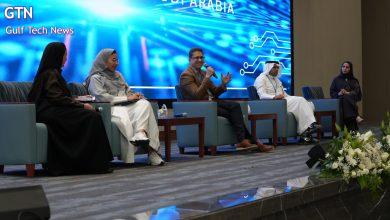Cisco tackles video-meeting fatigue with host of technology innovation to empower the hybrid work model

Al Riyadh, Saudi Arabia, gulftech : A recent study focused on executives and knowledge professionals commissioned by Cisco and conducted by Dimensional Research showed that more than half (56%) of employees spend most of their time in meetings when working remotely with 33% saying that it takes up half of their workday. This has resulted in 95% of employees experiencing video meeting fatigue.
The overall fatigue is attributed mainly to technological issues, which comprise of background noise, poor sound, and video quality. These elements have actively contributed to physical ailments with 81% employees reporting headaches, neck and shoulder strains and eye strains over time. In the long run, this has also made employees consider leaving their current employers, with 42% planning on making the move within two years citing video meeting habits.
Commenting on the findings of the report, Ahmad Zureiki, Head of Collaboration Business, Cisco MEA, said: “The modern work environment is not confined to a single space or device anymore. It’s flexible, it’s mobile, it’s hybrid. Business leaders in today’s world know that their employees are their #1 asset, and that means finding ways to both accommodate employee priorities and reimagine the workplace to improve remote work.”
He added: “With the hybrid working model becoming the new normal, we had to create new techniques where employees are not overworked or drained out at the end of each workday. We believe that the best technology is also the most intuitive, which is why our Webex platform is using new technology-enabled solutions to constantly improve and reduce fatigue and stress.”
Cisco has been tackling these pain points with its Webex platform that is continuously innovating to limit video-meeting fatigue by introducing targeted solutions and software.
Cisco’s Webex platform now uses Artificial Intelligence (AI) to translate people’s natural and nonverbal gestures into animated images, allowing users to make simple actions like raising hands or giving a thumbs up without clicking a button. Accessibility is also taken into consideration, with Webex featuring real-time closed caption and translation capabilities in over 100 languages, tackling auditory and language challenges in meetings.
The platform has also integrated new options to improve the experience for every employee. This includes a new polling and Q&A tool for feedback and questions anonymously, as well as Personal Insights, which gives every employee an easy method to assess how they spend their work hours.
Cisco Webex also uses devices, like Webex Desk, Webex Desk Mini and Room Bar solutions with dedicated software to reduce stressors commonly seen during extended meetings. This includes advanced noise cancelation feature to filter out distracting noises from the environment specially during the calls in shared spaces or home office. The cognitive Webex devices also provide dynamic framing which allows people to get up and stretch their legs while remaining on screen. The cameras in these devices also enhance the view of the conference rooms for remote participants, by automatically detecting them and providing individual streams, ensuring everyone is equally present on the screen and allowing participants to understand what every attendee is saying.




